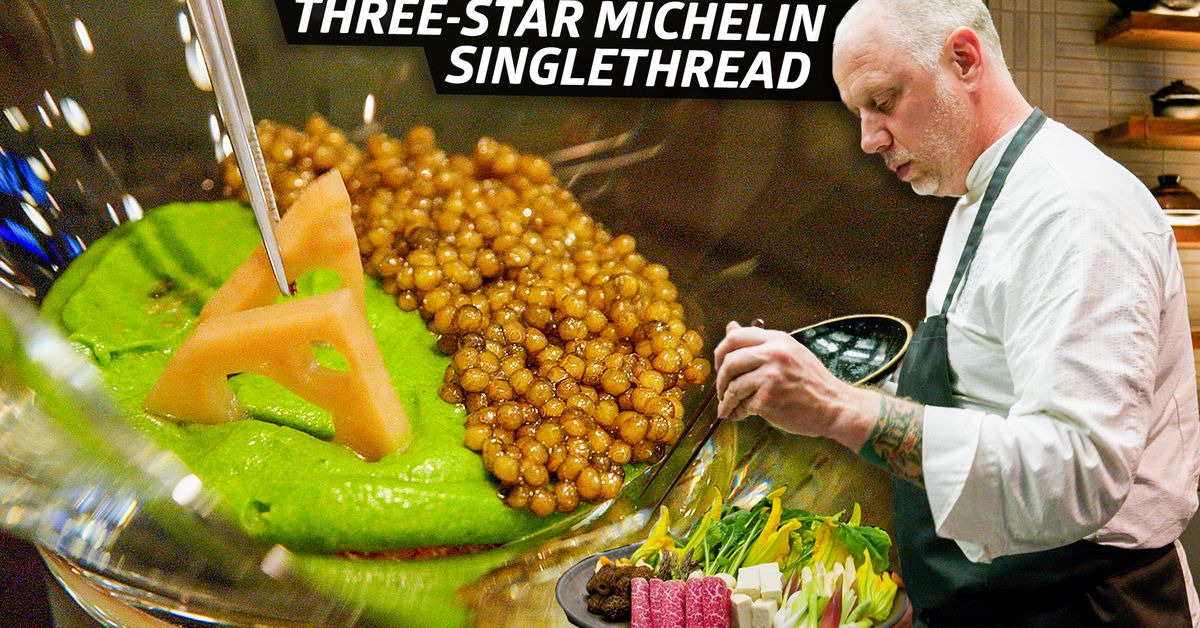
California wine country destination SingleThread, a three-star Michelin restaurant, is known for making intricate dishes using fresh produce from their own farm. Using freshly-picked produce, chef Kyle Connaughton and his team curates a tasting menu that includes mushi nabe black cod, anago shime, Duclair duck, and more.
“We’re really a restaurant driven primarily by what’s coming from the farm and what the vegetables are,” Connaughton explains.
On the day Eater visited, the kitchen was working on turning an abundance of squash into a sashimi dish.
“We have different zucchini, different squash, and basically we’re highlighting all the different parts of the plant,” Connaughton says.
First they ribbon the squash to get put onto the sashimi dish. The goal is to create the shape of a chrysanthemum flower with squash and sashimi.
From there, the squash ribbons are compressed into a kombu dashi — a Japanese soup stock — with fresh herbs.
Next they prepare the fish. Today, they are using what’s known in Japan as a madai, or sea bream. They scale the fish then break it off the bone to salt cure it.
“This is all very classic Japanese fish butchery,” says Connaughton. “This is really about precision because all the way down to the final slicing and getting each one of the slices to be exactly the same is really important for not how the dish looks, but how it eats.”
The fish is then thinly sliced, and the squash and sashimi are arranged like a flower on the serving dish.
Chefs make the belly, tail, and collar of the fish into a mousse that gets stuffed into the squash blossoms, which are then tempura fried.
The tempura fried squash blossom gets put on a different dish, which is then stacked on top of the plate of squash sashimi using a Japanese technique called jubako.
“Our farmers are working for months, sometimes like a year on a product, and we serve it that night,” says Connaughton. “It’s kind of our responsibility as chefs to showcase the hard work of the farmers.”
